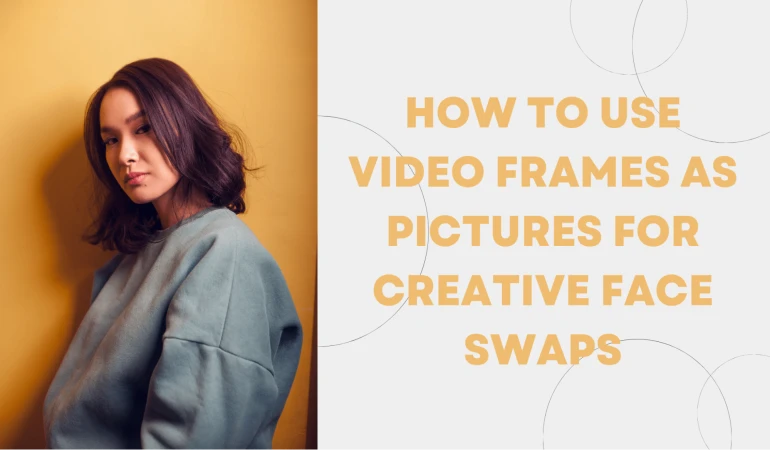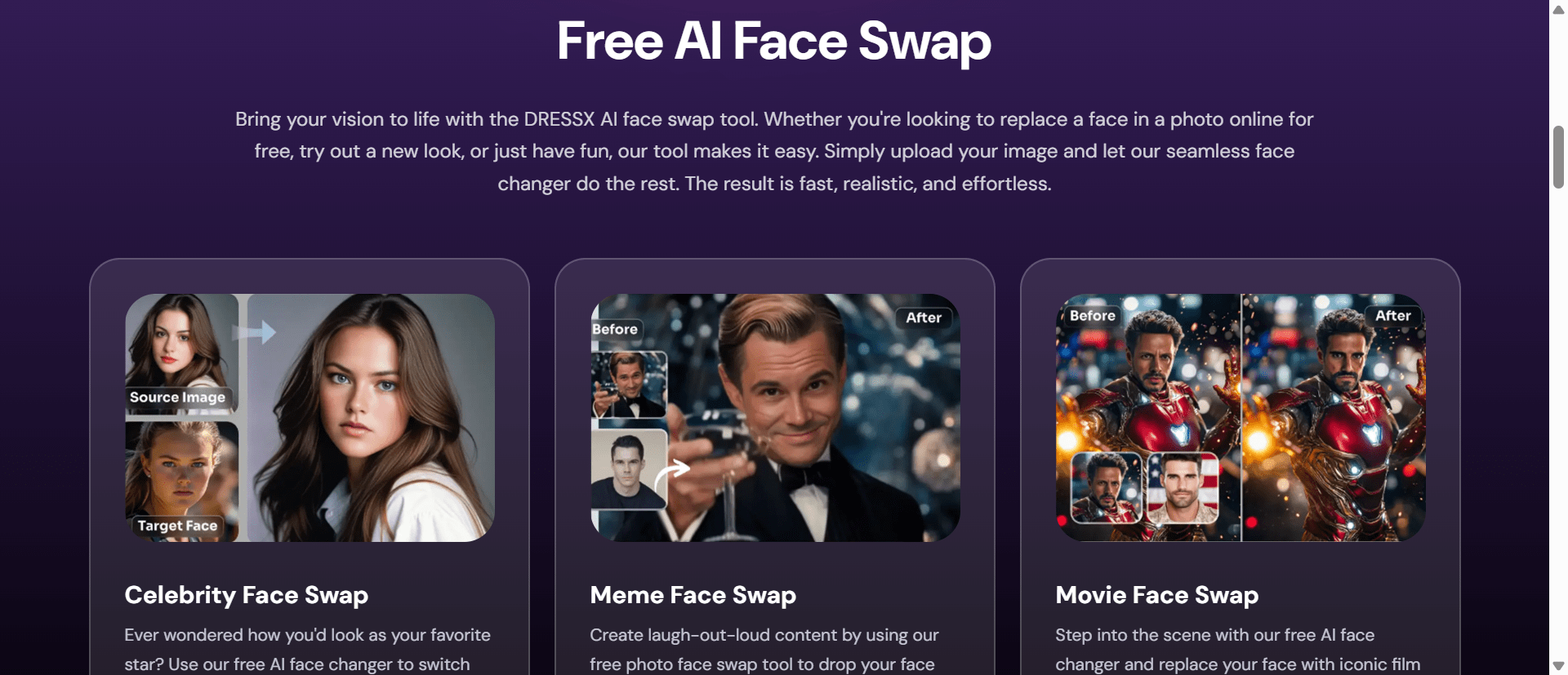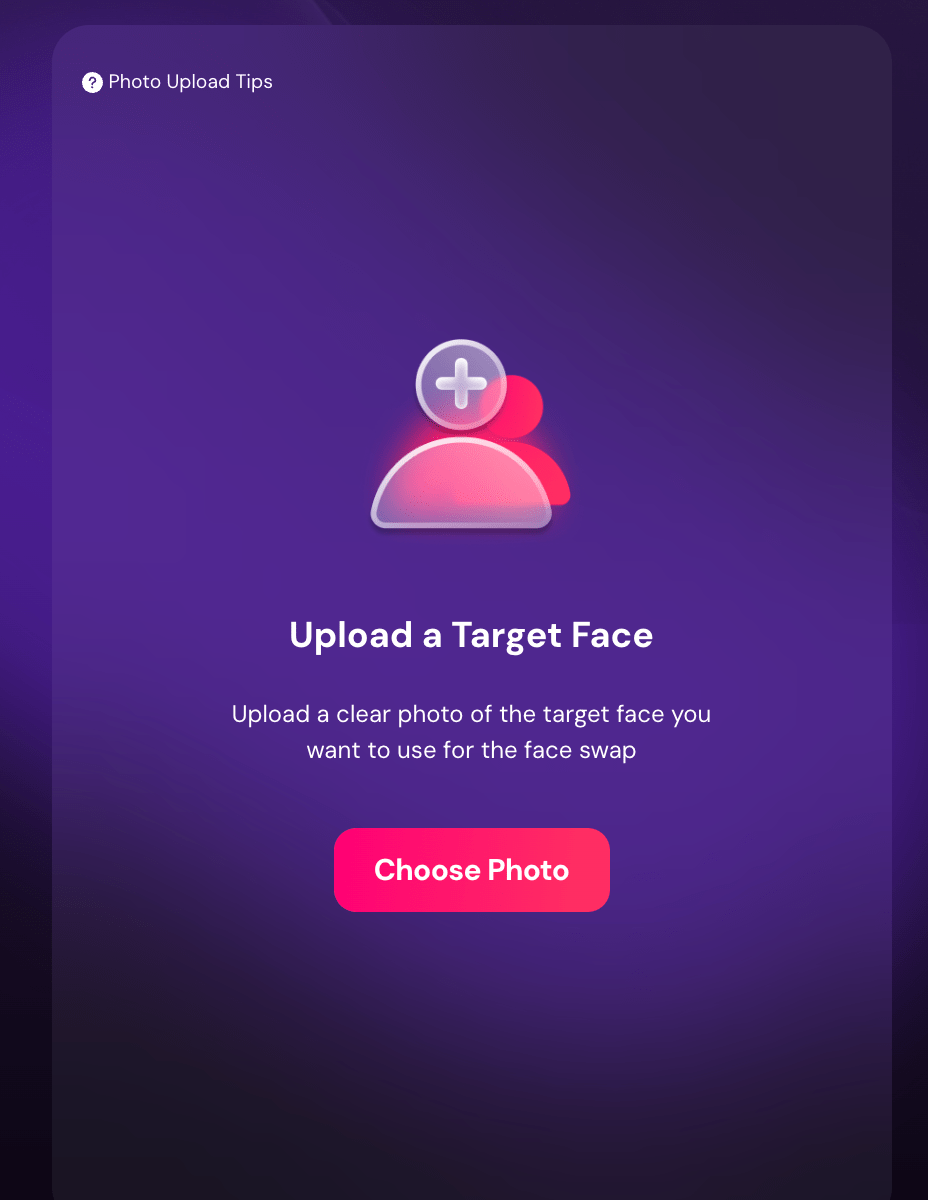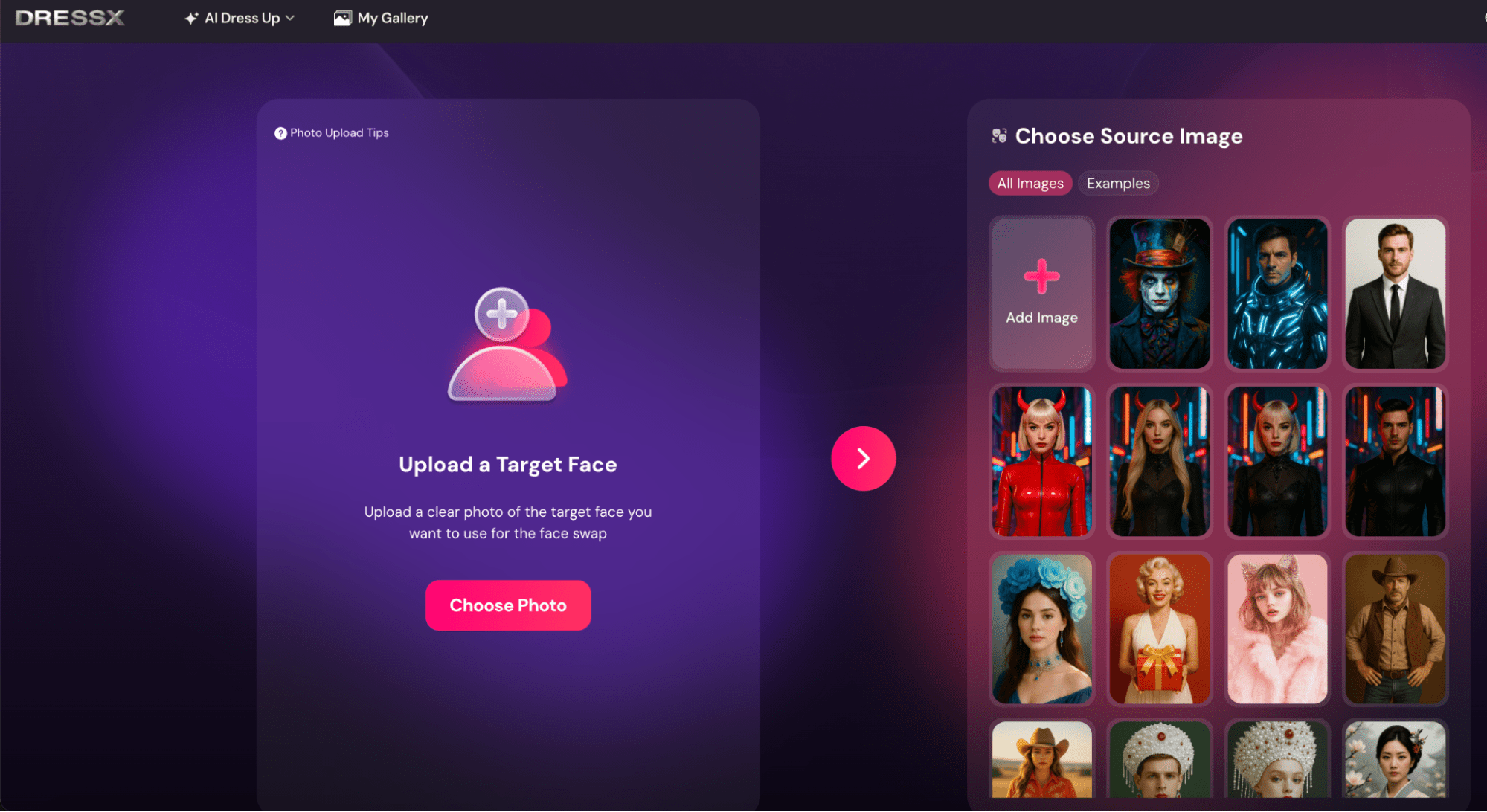How to Use Video Frames as Pictures for Creative Face Swaps
There's a secret to great face swaps that most people overlook: the perfect source photo often lives inside a video. A single frame - paused at just the right moment can deliver better lighting, sharper detail, and a more natural expression than a hurried selfie. In this guide, I'll show you how to turn video frames into punchy face-swap pictures and create scroll-stopping results with an AI Face Swap tool. You can use a free AI face editor and replace your face with those of iconic movie characters to bring your blockbuster dream to life. And here's the best part: you probably already have everything you need on your phone right now.
August 22, 2025 17:14
Why use a video frame?
Videos capture micro-expressions and angles that feel candid and real. Scrubbing through a clip lets you pick the exact moment your face is front-facing, well-lit, and in focus - three ingredients that dramatically improve swap quality. This is especially useful for action shots, cosplay, or reenacting movie stills where timing matters.

Think about it this way: when you take a regular photo, you get one shot. Maybe your eyes are half-closed, or your smile looks forced. But a 10-second video at 30 frames per second gives you 300 different options to choose from. That's 300 chances to find your perfect angle, your best expression, and the ideal lighting.
No wonder professional photographers often shoot in burst mode. They know the magic happens between the poses.
The hidden advantages of video frames
Beyond just having more options, video frames offer some surprising benefits:
Natural expressions: You're more relaxed when recording video than posing for a photo. This means more genuine smiles and authentic emotions.
Consistent lighting: As you move slightly in a video, you can find that sweet spot where the light hits your face just right.
Better focus: Modern phones prioritize face tracking in video mode, often keeping your face sharp even when you're moving.
No timer stress: Remember rushing to get in position before the self-timer goes off? With video, you can take your time.
Step-by-step: swap a face using a video frame
Let’s look at the steps to swap a face using a video frame:
1. Capture a clean frame
Start by recording a short video of yourself in good lighting. Natural light near a window works wonders, but any well-lit room will do. Move your head slowly from side to side, tilt it slightly up and down, and try different expressions. Even 15-20 seconds gives you plenty to work with.
Now comes the fun part: finding your golden frame:
Play your video and pause on a sharp, front-facing moment (eyes open, head steady).
Take a screenshot or export a frame from your editor. Aim for 720p or higher and avoid motion blur.
Keep hairline, forehead, and chin in the crop; include both ears if possible.
Pro tip: On most phones, you can scrub through video frame-by-frame by dragging the playback bar slowly. On iPhone, use the Photos app and drag the timeline at the bottom. On Android, most gallery apps let you do the same. For desktop, VLC media player has a frame-by-frame button (shortcut: E key).
2. Choose the target image
This is where your creativity shines. The target image is what you'll be swapping your face into, so choose wisely:
Pick the picture you want to transform: a movie still, poster, meme, painting, or your own photo.
Prefer images with a single visible face, good lighting, and a similar head angle to your frame.
What makes a great target image?
Clear, unobstructed face area.
Good resolution (at least 500x500 pixels, but bigger is better).
Interesting background or context that tells a story.
Similar facial expression to what you're going for.
Don't limit yourself to just celebrity photos. Some of the best face swaps use unexpected targets like classical paintings, vintage advertisements, or even cartoon characters rendered in a realistic style.
3. Go to the Face Swap tool
Open AI Face Swap tool, or a similar one.
Upload your target image (the scene you want to appear in).

Upload your source face (the video frame you captured).
The tool will detect faces automatically. If prompted, adjust the crop so the entire face area is clearly visible.
Quick troubleshooting tips:
If the tool doesn't detect your face, try a frame with better contrast between your face and the background.
Make sure your face takes up at least 10% of the image area.
Avoid frames where you're looking too far to the side.
4. Generate and refine
Here's where patience pays off:
Click to create the swap and preview the result.
If the angle looks off, try a different frame with a straighter gaze or more neutral expression.
Re-run until you're happy, then download your final image (PNG/JPG).
The refinement process - what to look for:
Skin tone matching: Does your skin blend naturally with the target's lighting?
Shadow alignment: Do the shadows on your face match the scene?
Edge blending: Check around the hairline and jaw - these areas often need the most work.
Expression fit: Does your expression make sense in the context?
Don't settle for "good enough" on your first try. Most professional-looking swaps take 3-5 attempts with different source frames. Each attempt teaches you what works and what doesn't.
5. Share thoughtfully
Before you hit that share button, take a moment to consider:
Credit original creators when appropriate and label parodies or memes clearly.
Always get permission before using someone else's likeness, and avoid misleading or harmful contexts.
Smart sharing strategies:
Add a watermark or caption that clearly shows it's a face swap.
Use hashtags like #faceswap #AIart #digitalart to set expectations.
Consider creating a series or theme for more engagement.
Save your originals. You might want to revisit them with better tools later.
Where face swaps shine
Now, let’s take a look at the use case where face swaps fit most:
Celebrity Face Swap
Drop your face into a red-carpet photo, album cover, or cinematic close-up for playful fan edits. Imagine yourself accepting an Oscar, walking the Met Gala carpet, or gracing the cover of Vogue. These swaps work best when you match the glamour with your expression.
Movie Face Swap
Become a superhero, space explorer, or classic noir lead. Recreate iconic frames to match costumes or vibes. Popular choices include:
Marvel and DC superhero posters.
Star Wars character portraits.
Harry Potter promotional materials.
Classic Hollywood glamour shots.
Action movie explosions (you walking away, of course).
Meme Face Swap
Put yourself into trending formats or revive old favorites for inside jokes and reaction posts. The key here is timing - jump on trends while they're hot. Some evergreen options:
Distracted boyfriend meme.
Drake pointing meme.
Woman yelling at cat.
This is fine (dog in burning room).
Cosplay and Style Tests
Preview makeup, wigs, or costumes on poster-style images before a shoot or convention. This is incredibly practical. Save money by testing looks digitally before buying that expensive costume. You can even create a mood board of different character options.
Art and History Remixes
Step into Renaissance portraits or vintage posters for clever before/after reveals. Educational and entertaining options include:
Mona Lisa (classic but still fun).
American Gothic.
The Scream.
Vintage travel posters.
Historical photographs.
Team and Event Fun
Create themed announcements, birthday cards, or campaign visuals with a consistent aesthetic. Ideas that always get laughs:
Office team as a superhero squad.
Birthday person through the decades.
Holiday cards with famous paintings.
Graduation announcements with cap-and-gown celebrities.
Pro tips for the best results
Here are the strategies to get the best face-swapping results:
Match angles
Source and target should align chin level, similar tilt, and have straight eyes. Here's a quick test: Imagine a line through both eyes and another through the nose. These lines should be at similar angles in both images.
Mind the light
Choose frames with evenly lit faces; harsh shadows can confuse any model. The golden rule: if you can see details in both the brightest and darkest parts of your face, you're good to go. Avoid:
Direct sunlight creates harsh shadows.
Backlit situations where your face is too dark.
Mixed lighting (like half your face in shadow).
Reduce clutter
Hair across the face, hands, glasses glare, or motion blur can degrade quality. Pick a cleaner frame. If you wear glasses, try these tricks:
Tilt them slightly down to avoid glare.
Use frames without an anti-reflective coating for photos.
Consider removing them if the swap allows.
Go higher-res
Bigger, sharper frames produce more realistic blends and skin texture. If your phone shoots 4K video, use it! You can always compress later, but you can't add quality that wasn't there to begin with.
Additional power tips
The 3-second rule: Record yourself counting slowly from 1 to 3 while looking at the camera. This gives you a range of subtle expression changes that often work better than forced smiles.
Use burst mode as backup: While video frames are great, shooting in burst mode (holding down the photo button) gives you another pool of options with potentially higher resolution.
Mirror your movements: If the target face is looking slightly left, you should too. Practice in front of a mirror or use your phone's front camera as a guide.
Consider the neck: Many face swaps fail because the neck angle doesn't match. Pay attention to how the target's head sits on their shoulders.
Quick ethics and legality checklist
Let's keep things fun and legal:
Get consent for any non-self face.
Don't use swaps to impersonate, harass, or mislead.
Avoid sensitive or commercial uses without rights.
Be especially careful with minors and private individuals.
Red flags to avoid:
Creating fake evidence or alibis.
Making someone appear in compromising situations.
Using swaps for dating profiles or professional headshots without disclosure.
Creating political misinformation.
Violating platform-specific rules (each social media site has its own policies).
Troubleshooting common issues
You may find the issues while face-swapping. Here are the strategies for fixing them:
The swap looks fake around the edges: Try a source image with a simpler background, or choose a frame where your hair isn't too wild. Sometimes pulling your hair back for the source video helps.
The skin tones don't match: Look for frames where you're in similar lighting to the target. Morning light often matches studio lighting better than afternoon sun.
Your face looks stretched or squished: This happens when face shapes are too different. Try targets with similar face shapes, or adjust your expression to better match the target's face width.
The tool won't detect your face: Ensure your face is at least the size of your thumb at arm's length on your screen. Also, check that your face is fully visible - no hands, hair, or objects blocking parts of it.
Taking face swap to the next level
Once you've mastered basic swaps, try these advanced techniques:
Series creation: Make a "Me in Every Best Picture Winner" series, or "My Face Through Art History."
Before/after stories: Show your morning face swapped onto a glamorous photo, then your ready face on a casual photo. Reverse expectations for humor.
Group swaps: Coordinate with friends to all swap into the same movie poster or album cover.
Seasonal themes: Create holiday cards, Halloween costume previews, or summer vacation "wish I was here" posts.
Animation potential: Some face-swapping tools let you apply your swap to GIFs or short videos. Imagine your face on a nodding approval GIF!
Final thoughts
When your swap looks seamless, export and publish across socials, add it to a mood board, or build a fun series around a theme (one character per day, a meme calendar, or a "movie poster week"). Starting from a carefully chosen video frame gives you the control - and the realism - that static selfies rarely match.
Remember, the best face swaps tell a story or deliver a punchline. They're not just about the technical quality - they're about the creative idea behind them. So grab your phone, record that video, and start experimenting. Your perfect face swap moment is just a frame away.
And here's a secret: the more you practice, the better you'll get at spotting which frames will work before you even try them. You'll develop an eye for lighting, angles, and expressions that translate well. Soon, you'll be creating swaps that make people do a double-take and ask, "Wait, is that really you?"
Have fun with it, stay creative, and always swap responsibly!







